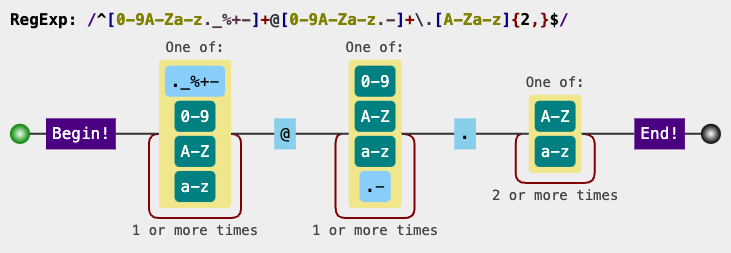· Heybounce · Guides · 5 min read
Spamtrap Emails Explained: How to Identify and Avoid Them for Better Deliverability
Spamtrap emails harm deliverability. Learn how to identify and avoid them to protect your email campaigns.

Email marketing is a powerful tool to reach your audience, but if your emails are consistently flagged as spam or blocked, your campaigns can quickly lose effectiveness. One of the biggest threats to your email deliverability is spamtrap emails. Understanding what spamtraps are and how to avoid them is crucial for maintaining a strong sender reputation and ensuring your emails land in inboxes.
In this post, we’ll explain what spamtrap emails are, how they can harm your deliverability, and offer practical tips on how to identify and avoid them.
What Are Spamtrap Emails?
Spamtrap emails are email addresses specifically designed to catch spammers. These email addresses don’t belong to real users but are set up by Internet Service Providers (ISPs) or anti-spam organizations to identify senders who aren’t following proper email practices. The goal of spamtraps is to flag and block email senders who are sending unsolicited emails or haven’t properly cleaned their email lists.
There are two common types of spamtraps:
1. Pristine Spamtraps
Pristine spamtraps are email addresses that have never been used by a real person. They are usually placed on hidden web pages or buried in code so that only email scrapers and spammers who collect emails improperly can find them. Sending emails to pristine spamtraps signals that your list may have been obtained unethically, which can result in your emails being blacklisted.
2. Recycled Spamtraps
Recycled spamtraps are old email addresses that were once valid but have since been abandoned by the user. ISPs convert these addresses into spamtraps after they’ve been inactive for a long period. Sending emails to recycled spamtraps indicates poor list hygiene, as the addresses should have been removed during regular list cleaning.
How Spamtrap Emails Affect Your Deliverability
When you send emails to spamtrap addresses, your email deliverability suffers. Here’s how spamtraps can hurt your campaigns:
1. Damage to Sender Reputation
One of the most critical consequences of hitting spamtrap addresses is damage to your sender reputation. ISPs monitor sender behavior closely, and hitting spamtraps signals that you’re not following proper email list management practices. A poor sender reputation means that your future emails are more likely to land in spam folders, regardless of the recipient.
2. Higher Bounce Rates
Spamtrap addresses often cause emails to bounce, as they aren’t associated with real inboxes. High bounce rates signal to ISPs that your list is outdated or poorly maintained, which further damages your reputation and decreases the chances of successful email delivery.
3. Being Blacklisted
In the worst-case scenario, sending emails to too many spamtrap addresses can get your domain blacklisted by ISPs or anti-spam organizations. This means your emails may be blocked entirely, preventing them from reaching any recipients on your list.
How to Identify and Avoid Spamtrap Emails
While avoiding spamtrap emails may seem challenging, there are several effective strategies you can use to protect your email deliverability:
1. Use an Email Verification Tool
One of the most efficient ways to avoid spamtraps is by using an email verification tool. These tools scan your email list for invalid, outdated, or suspicious email addresses and remove them before you send your campaign. They can also help detect risky addresses, such as those associated with recycled spamtraps.
2. Maintain Regular List Hygiene
Regular email list cleaning is crucial to maintaining a high-quality, up-to-date list. Remove inactive or unengaged subscribers and bounce addresses from your list regularly to avoid sending emails to old or abandoned accounts.
Set up automated processes to remove users who haven’t engaged with your emails in a specified period, such as 6 months to a year.
3. Implement Double Opt-In
Using double opt-in ensures that only real, engaged users join your email list. Double opt-in requires users to confirm their email address after signing up, which helps verify the validity of the address. This reduces the risk of adding invalid or malicious addresses, including spamtraps, to your list.
4. Avoid Buying Email Lists
One of the easiest ways to end up sending emails to spamtraps is by using purchased or scraped email lists. These lists often contain outdated or suspicious addresses, and you have no control over how they were collected. Building your own organic list through legitimate opt-ins is the safest and most effective approach to avoid spamtraps.
5. Monitor Engagement Metrics
Pay attention to engagement metrics such as open rates, click-through rates, and bounce rates. Low engagement or high bounce rates can indicate that your list includes inactive or invalid addresses, which may include spamtraps. Regularly prune your list to focus on engaged subscribers.
The Benefits of Avoiding Spamtraps
By taking proactive steps to identify and avoid spamtrap emails, you’ll see significant benefits for your email campaigns:
1. Improved Deliverability
With a cleaner, well-maintained email list, your emails are more likely to reach the inboxes of your engaged recipients. Higher deliverability translates into better campaign performance.
2. Stronger Sender Reputation
Avoiding spamtraps protects your sender reputation with ISPs, ensuring your emails aren’t blocked or flagged as spam. A strong sender reputation leads to better long-term results.
3. Higher Engagement Rates
By sending emails to real, active recipients, you’ll experience higher open and click-through rates. This improves your overall email marketing success and helps build a more engaged audience.
Conclusion
Spamtrap emails pose a serious risk to your email deliverability and sender reputation, but by following best practices like regular list cleaning, using email verification tools, and implementing double opt-in, you can protect your campaigns.
Maintaining a high-quality email list not only helps you avoid spamtraps but also ensures that your messages reach the right audience, leading to better engagement and results.
Take action today to ensure your email list is clean and up-to-date, and watch your email deliverability improve over time.





